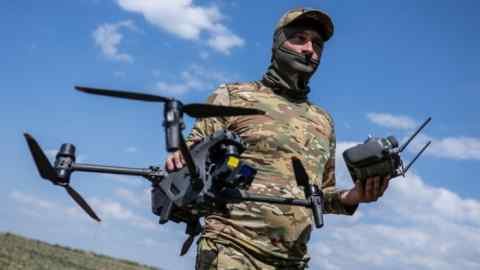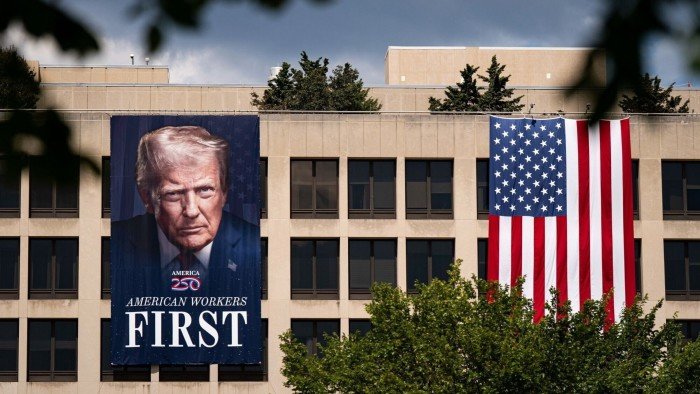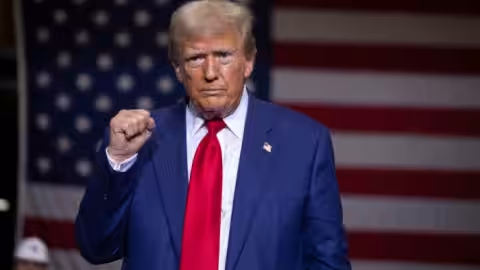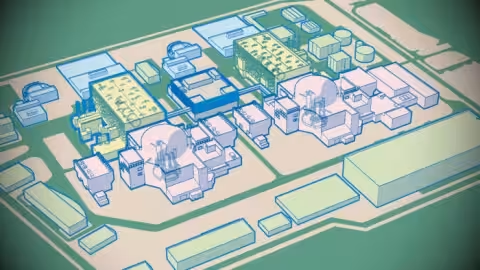Nobody loves a good bandwagon like a venture capitalist. Among European start-up investors, “resilience” and “sovereign” tech are giving even artificial intelligence a run for its money as the hottest new buzzwords.
Led by Germany’s Helsing, which pulled in another €600mn in a fundraising led by Spotify co-founder Daniel Ek’s investment group last month, defence tech companies making drones, submarines and other battlefield systems have taken the place once occupied by e-scooters, grocery apps and the metaverse in investors’ hearts.
Many European VCs, who might ordinarily be found backing fintech or human resources software companies, say they now feel energised by a higher mission: helping defend the continent’s borders.
That new sense of purpose was evident on the sunny lawns of Soho Farmhouse last month, as the great and good of Europe’s tech industry drank fizz and munched Fortnum & Mason sausage rolls at Founders Forum Global, British tech stalwart Brent Hoberman’s annual tech gathering.
Just a year earlier, Europeans had been wallowing in a collective failure to come up with world-conquering artificial intelligence start-ups to rival those in the US and China amid a post-pandemic funding slump for early-stage companies. Last year’s State of European Tech report by venture firm Atomico found that 40 per cent of founders felt “less optimistic” about the local industry’s future than the prior year.
However, the vibe shift this year was enough to give some Founders Forum attendees whiplash. Many of those tramping around the manicured fields seemed “giddy” with excitement about drones, said one wide-eyed Euro tech veteran. “Defence tech is the new crypto,” quipped another investor, with a queasy smile.
The investment case is certainly convincing. Military spending in Europe (including Russia) rose by 17 per cent to $693bn last year, according to the Stockholm International Peace Research Institute, and many countries are pledging to divert a growing portion of their defence budget to innovators.
VC funding in European defence and security tech rose 24 per cent last year to $5.2bn, according to the Nato Innovation Fund and research group Dealroom, and the number is tracking even higher so far this year.
But as they pile into a new generation of arms manufacturers and their AI enablers, some tech investors still seem detached from the reality of what they are financing. “Product-market fit” means something quite different on the battlefield. The MBA crowd has switched all too seamlessly from talking about CAC (customer acquisition cost) and CPC (cost per click) to a rather different measure of efficiency: CPK, or cost per kill.
Talking about this area is hard. Should the tech community celebrate a huge jump in valuation for a company that is benefiting from a deterioration in global security in the same way that it did an online videoconferencing start-up during the pandemic? Striking the right tone is a work in progress but hiding behind acronyms and euphemisms does not seem sustainable.
Some VCs maintain that they only invest in “dual use” technologies, perhaps to convince themselves — or their investors — that those drones might also be useful away from the front lines. Many investors have tight rules around backing so-called “kinetic” or offensive applications.
Even as capital floods into Europe’s multiplying defence tech start-ups, there is still a shortfall when it comes to investing in weapons and munitions, says Mikolaj Firlej, a co-founder and general partner of Expeditions Fund, a venture capital firm based in Poland that focuses on European security.
“Starting from nothing, obviously there is a big jump” in defence tech investment, he says. “But we are still at the early stages of re-industrialisation . . . There is so much to be done.”
One Founders Forum panel jolted attendees back to the reality of war by describing how Russian forces identified Ukrainian targets by tracking the paths of large groups of rodents, whose population has surged in the trenches on the front lines.
Khaled Helioui, a partner at VC firm Plural and an early Helsing investor, says this is no time to be squeamish. “Some investors argue that they don’t invest in things that kill people,” he says. “I wish we had that luxury . . . We cannot afford to be naive anymore. It [war] is happening at our doorstep right now.”
tim.bradshaw@ft.com























